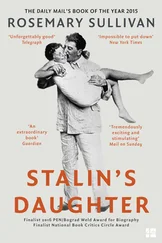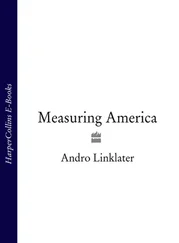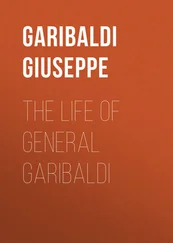Despite the attention Wayne directed at him, Power smuggled a letter from Wilkinson to New Orleans in November 1795. Carondelet lost no time in passing its most important point on to Madrid. “I shall watch all the movements which the army of Gen’l Wayne may undertake,” he told the royal council, “whereof W[ilkinson] will punctually inform me, as I have just had a letter from him on this subject in which he assures me that he will be informed of all that may be done.”
Confident that Wilkinson intended to deliver both information and Kentucky itself, Carondelet authorized Power to return north with the promised $9,640 and to contact all those concerned with the Spanish Conspiracy.
WILKINSON’S PROMISE TO PROVIDE informaton on the army’s movements signaled that he was no longer to be kept in isolation. Wayne had not changed his mind about Wilkinson’s treachery, but after three years’ service in the field, Wayne needed rest. Physically, he was suffering from recurring stomach pains that were described as “gout of the stomach,” a diagnosis invalid in modern medicine, which identifies gout as the crystallization of uric acid in the joints. The association of sharp pain with high levels of stress suggests an ulcer. He was overdue for leave, and Congress wanted him to testify about his military and diplomatic achievements in the west.
With deep reluctance Wayne finally departed for Philadelphia in December 1795, having left Wilkinson as acting head of the army. His subordinate’s power, however, was severely circumscribed. Wayne had summoned him to Fort Greeneville and coldly presented him with a list of instructions detailing exactly how he was to supervise the duties and movements of the Legion. On the advice of Pickering, secretary of war, Wilkinson was “enjoined not to make any the least alteration to them.”
This attempt to limit his authority— the final insult in a year of humiliations— ratcheted Wilkinson’s hatred of his superior to a new level of toxicity. To Harry Innes, he made it clear that he was ready to risk dismissal to bring Wayne down: “This accomplished, you will most probably have me for a neighbour [in Frankfort], as I am tired of the shackles of Military Life.”
His first step, however, was to stretch the restrictions on his command. Within days of Wayne’s departure for Philadelphia, Wilkinson issued a general order to the army announcing his “determination to inculcate, to enforce and to maintain a Uniform System of Subordination and Discipline through all Ranks, without Partiality, Prejudice, Favor or Affection.” The implication, that Mad Anthony Wayne had allowed the army’s command structure to be undermined by factionalism, was cleverly judged, since the quarrel between the two generals gave it a basis in reality. Even officers suspicious of Wilkinson supported a return to impartial discipline.
He followed up his announcement with a prolonged tour of inspection of the line of outposts that stretched to Fort Wayne, as though he needed space after his confinement in Fort Washington. Before he left, orders for rations and pay and clothing sprayed out from Fort Greeneville. Captain Shaumburgh was hurried north to negotiate the handover of Detroit from the British, Colonel Hamtramck was commanded to bring about a peaceful solution to a quarrel with the Chippewa in his area, and supplies and dollars were despatched to Fort Massac to feed and pay the garrison now commanded by Captain Zebulon Pike, father of the future explorer.
Wherever he went, Wilkinson deliberately spread his influence at the ex- pense of Wayne’s. But as always his chief weapon lay in Congress. The opportunity to strike was provided by a seismic shift in the relationship between Spain and the United States.
THE CHANGE WAS CAUSED by the war in Europe. In July 1795 a French army came within striking distance of Madrid, forcing Carlos IV’s government to make a hasty peace with France. By the logic of power politics, this set Spain against Britain, forcing Spain to make a new alliance in North America as protection against a possible British attack on Louisiana. The price of friendship with the United States was high, an agreement to open the Mississippi to the flatboats of Kentucky farmers. In October 1795, the Treaty of San Lorenzo was signed between the two nations. It promised not only that the river would be open to trade, but that a clearly defined frontier would be run along the thirty- first parallel between the United States and the Spanish colonies of East and West Florida.
No one was more directly affected by the treaty than the governor of Louisiana, who had invested thousands of dollars in a conspiracy to detach Kentucky from a country that was now Spain’s ally. Defiantly Carondelet continued with his plan, sending Thomas Power from New Orleans with the promised $9,640 for Wilkinson.
The arrival of Carondelet’s messenger in May 1796 should have caused the acting head of the army some embarrassment. But in answer to Power’s formal request to travel to Fort Greeneville for their meeting, Wilkinson answered grandly— and conveniently for someone acting as Carondelet’s eyes—that since the United States was at peace with everyone, “the officers of the American army have no concealments to make, and therefore our camps and our forts are free to the ingress and egress of all persons who deport themselves with propriety.”
Catering to the general’s taste for expensive living, Power had brought a gift of “segars from Havana,” but what cheered Wilkinson’s spirits more was the news that the money promised by Carondelet had finally arrived in the north and was waiting for him at New Madrid. The cash, as Power confided to Gayoso, was urgently needed because of “the [financial] embarrassments of gen. Wilkinson . . . For a long time past he has been expecting this money, the delay of which has been the cause of much trouble to him, involving him in great difficulties.” To escape detection and avoid the risk of another murder, he and Power agreed that the dollars should be packed in barrels of sugar and coffee ostensibly being sent for sale in Louisville with no more than a thousand coins in each barrel so that the extra weight would not be noticed.
Power was back in New Madrid within ten days of leaving Fort Greeneville, but without written authorization from Wilkinson to pick up the money on his behalf. This minor problem, caused by the general’s reluctance to entrust compromising material to someone so liable to be searched, had large consequences. Since it would have taken months to obtain permission from New Orleans, Colonel Tomás Portell, commandant of the fort at New Madrid, agreed to make the handover anyway, but he and Power wrote formal explanations for Carondelet to show why they had ignored his instructions. Thus of all the payments Wilkinson received from Spain, none was better documented than this sum of $9,640, and none would figure more prominently in the accusations leveled against him.
Yet it was already clear to Wilkinson at least that the San Lorenzo treaty had snuffed out any lingering prospect of Kentucky’s secession. Granted their long-held wish, the western settlers no longer had any motive for leaving the Union. That was the assumption made in Philadelphia, and accepted by Madrid. In New Orleans, Natchez, and New Madrid, however, the colonial administration thought otherwise. For Carondelet and Gayoso, the Spanish Conspiracy remained alive, and neither had any intention of abandoning the Mississippi forts built on Wilkinson’s recommendation to limit American expansion. Having fortified and garrisoned the Chickasaw Bluffs post, Gayoso even went on to construct an armed stockade almost opposite the mouth of the Ohio itself. In the summer of 1796, Carondelet wrote explicitly to Benjamin Sebastian, and the other members of the conspiracy, “It may be confidently asserted, without incurring the reproach of presumption, that his Catholic Majesty will not carry the above mentioned treaty into execution .”
Читать дальше












